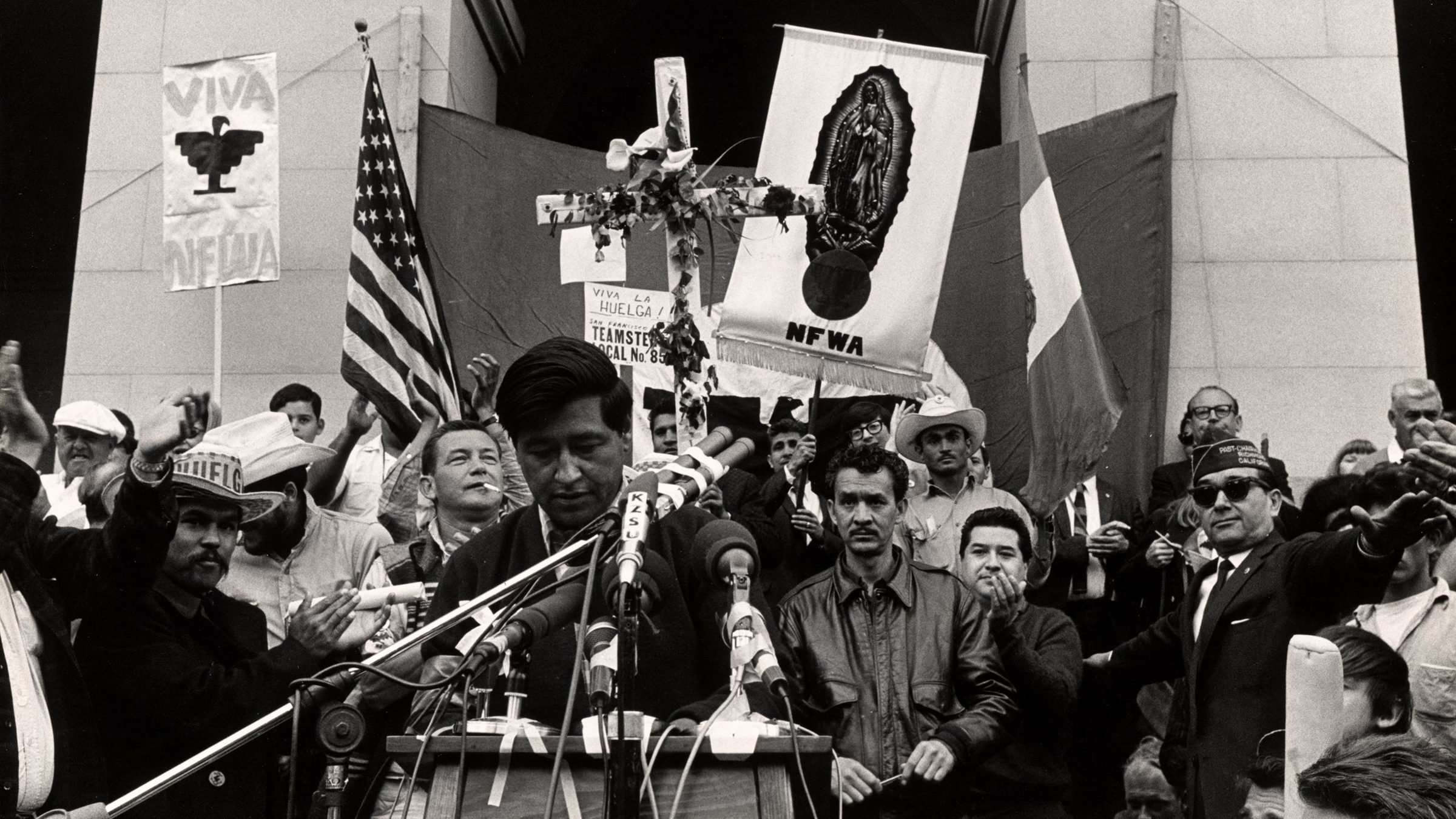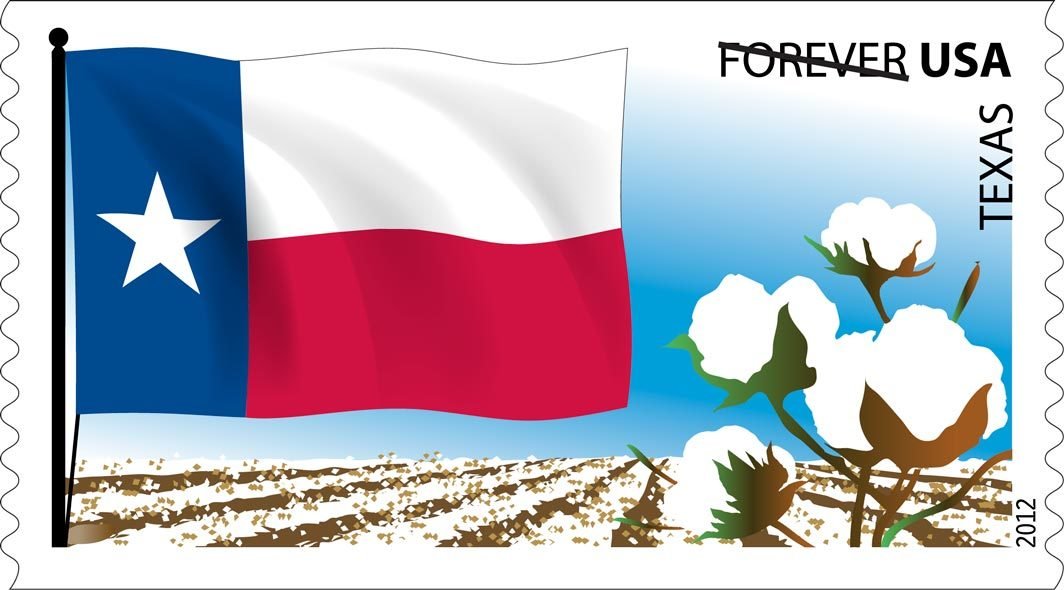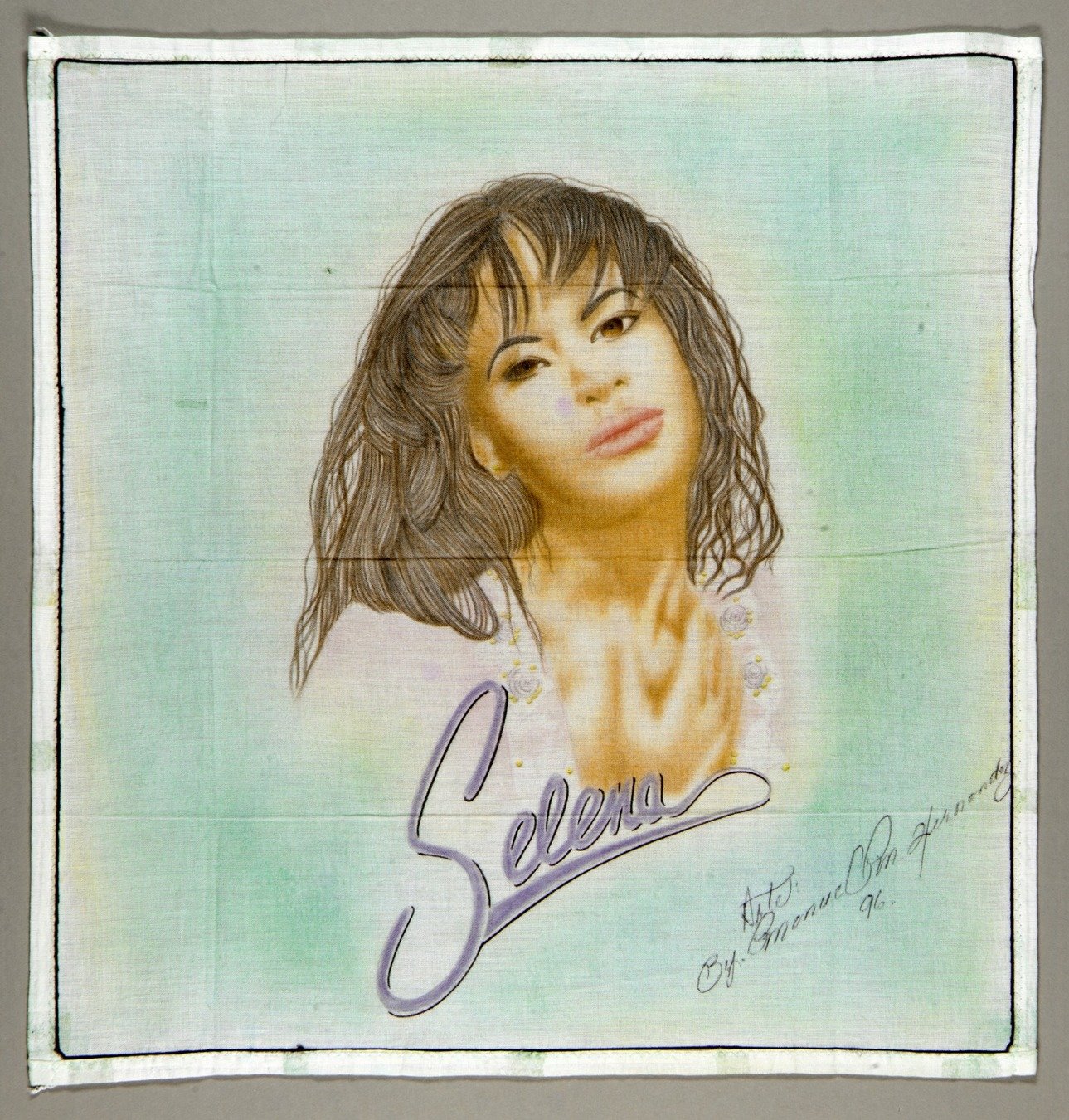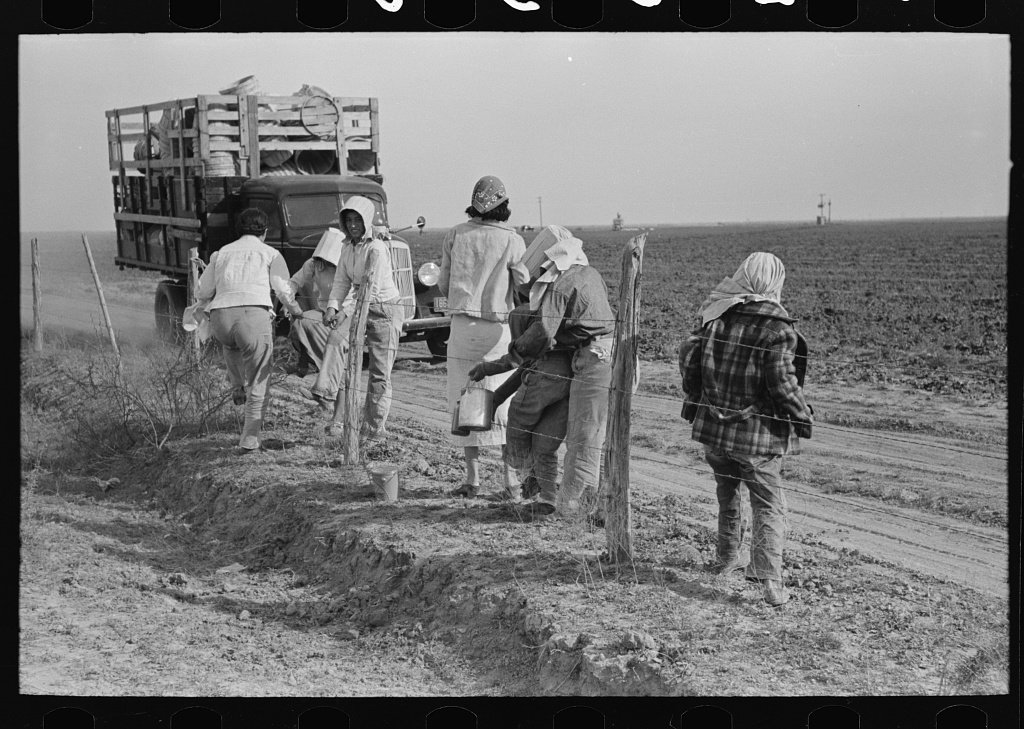Music of the Chicano Movement
Lesson Hub 11:
Modern Musical Fusions in the Chicana/o Community


How do modern-day Chicana/o musicians blend traditional Mexican styles with other influences to create musical fusions that are meaningful, powerful, and relevant?
Los Texmaniacs, photo by Daniel Sheehy. Smithsonian Folkways Recordings.

The overarching essential question for Lesson 11 is:

Modern Musical Fusions in the Chicana/o Community
HISTORY & CULTURE
MUSIC LISTENING
MUSIC MAKING
30+ MIN
30+ MIN
25+ MIN
Resistance to Cultural Death - An Affirmation of My Past, by Mario Castillo. Smithsonian American Art Museum.

Son Jarocho in California
Path 1

30+ minutes


Chicanos in California, unknown artist. Smithsonian American Art Museum.
Son jarocho, a distinct musical genre that originated in Veracruz, Mexico, in the eighteenth century, experienced a resurgence in California during the time of the Chicano movement (late 1960’s and 1970’s).
Son Jarocho in California



What Is Son Jarocho?

Since its inception, son jarocho has been a musical fusion of sorts.
“It is a unique blend of influences from the Spanish colonizers of Mexico, from Africans taken to ‘New Spain’ as slaves, and from the indigenous population of the southeastern region of Mexico” (Loza, 2019, p. 67).
Optional: Watch this short video example of son jarocho from Smithsonian Folkways

Connecting with Cultural Heritage


Resistance to Cultural Death - An Affirmation of My Past, by Mario Castillo. Smithsonian American Art Museum.

Son Jarocho in California

Musician César Castro Overlooks El Sereno, California, video still by Akira Boch. Smithsonian Center for Folklife and Cultural Heritage.
In California, the process of re-claiming and re-interpreting son jarocho specifically has helped Chicana/o musicians forge their own collective sense of identity, social power, legitimacy, and community.


As we have learned throughout this Pathway, engaging with traditional Mexican-influenced musical styles has historically provided a concrete way for Chicana/o musicians to express their “dissatisfaction with Anglo-American cultural and social institutions” (Loza, 2019, p. 82).

Son Jarocho: Cultivating Community
Watch this short video, which details musician César Castro's perspective of the persisting significance of son jarocho music for members of the Chicana/o community in Los Angeles, CA.

Sounds of Los Angeles: César Castro's Son Jarocho, by Akira Boch. Smithsonian Center for Folklife and Cultural Heritage.

Post-Video Discussion
Why does son jarocho cultivate community?
Why is son jarocho a considered a living tradition?

This music tradition is not exclusive . . . It invites people in. In this way, son jarocho serves as a powerful tool for community building.
Son Jarocho: Cultivating Community


- The structure (form) of son jarocho is simple and predictable.
- The structural “skeleton” often consists of two or three chords and a strophic melody (it is repetitive).
- Therefore, people can make meaningful contributions right away, even if they are beginners.

Son Jarocho: A Living Tradition
This style is not meant to be static (frozen in time) . . . it is always evolving through a continuous cycle of tradition, reinterpretation, and innovation.
Son jarocho: A Living Tradition. Diagram courtesy of Steven Loza.

Son jarocho’s heavy emphasis on improvisation gives musicians creative freedom to re-interpret, change, and innovate this music tradition.


The Son Jarocho "Scene" in California
Modern-day Chicana/o musicians in California keep features of the son jarocho tradition that they deem foundational (e.g., the Spanish language, certain instruments, structure) while incorporating new features (different instruments, vocal style, musical forms, rhythmic variations).

Son jarocho has now been an important part of the Chicana/o music scene in California for over 50 years.
These new interpretations reflect and honor the communities in which they live (diverse, multiracial, and constantly changing).

Artist Spotlight: Las Cafeteras

Las Cafeteras, by Rafa Cardenas. Courtesy of Las Cafeteras.
Las Cafeteras is an example of a thriving contemporary music ensemble in Los Angeles that is influenced by son jarocho.
The members of Las Cafeteras emphasize the power of music as a vehicle to build bridges among different cultures and communities and create a world where many worlds fit.


Comparing Traditional and Modern Interpretations of Son Jarocho

Within the next activity, you will listen for stylistic differences between two interpretations of one of the best-known son jarochos in the world: "La bamba".
José Gutierrez and Los Hermanos Ochoa, by Daniel Sheehy. Smithsonian Folkways Recordings.
Las Cafeteras, by Rafa Cardenas. Courtesy of Las Cafeteras.




Activity: Comparing Traditional and Modern Interpretations
As you listen/watch, use the compare/contrast worksheet to reflect upon the similarities and differences you notice regarding music elements, expressive qualities, meaning, purpose, and performance context between these two interpretations.

About Example 1 (Veracruz, Mexico)

José Gutiérrez & Los Hermanos Ochoa grew up listening to/learning to play son jarocho as children in Veracruz, Mexico, and have been performing this type of music for over 60 years. For them, son jarocho is a vital link to their past and homeland.
Advance to the next slide to watch their performance, recorded at the Smithsonian Folklife Festival in Washington, DC, in 2004.



José Gutiérrez & Los Hermanos Ochoa: "La bamba"

La bamba, by José Gutiérrez & Los Hermanos Ochoa. Smithsonian Folkways Recordings.
Fill out column 1 as you listen.
About Example 2 (California, USA)

Las Cafeteras, a popular ensemble that blends the sounds and instruments of son jarocho with other music traditions (e.g., hip hop, punk, beat music, cumbia, and rock), changed the lyrics of "La bamba" to match the reality of the world in which they find themselves (early 21st-century Los Angeles).
Advance to the next slide to watch their performance, recorded at the Día de los Muertos celebration at the National Museum of the American Indian in Washington, DC, in 2016.


Las Cafeteras, photo by JP. Courtesy of Las Cafeteras.

Las Cafeteras:
"La bamba rebelde"

Día de los muertos/Day of the Dead Festival: Las Cafeteras. National Museum of the American Indian.
Fill out column 1 as you listen.

José Gutiérrez & Los Hermanos Ochoa (Veracruz)
- Harp, requinto, and jarana
- No percussion instruments
- Thinner texture (three performers)
- No dance
- Improvisation
- Fast tempo
- Only men
- Spanish language

Comparing Traditional and Modern Interpretations
Las Cafeteras (California)
- No harp
- Additional instruments (donkey jaw-bone; drum-set; wooden platform)
- Thicker texture (many performers)
- New activist-oriented lyrics
- Improvisation
- Hip-hop influenced vocal inflection, lyrics often “spoken”
- Incorporates dance and audience participation.
- Moderate/slow tempo
- Women (lead singer) and men (supporting role)
- Spanish language

- Why does son jarocho cultivate community?
- Why is son jarocho considered a living tradition?
- What characteristics of traditional son jarocho have Chicana/o musicians kept?
- In what ways have Chicana/o musicians in California reinterpreted son jarocho?

Learning Checkpoint
End of Path 1! Where will you go next?





The Evolution of Tejano Music
Path 2

30+ minutes

Selena, by Al Rendon. National Portrait Gallery.

What is Tejano/a?
This short video gives an overview of the life and musical contributions of tejana music star Selena Quintanilla-Pérez, and provides a clear definition of the term tejano.
Portrait in a Minute: Selena. National Portrait Gallery.
The term tejana/o refers to:
- A Mexican American who was born or grew up in Texas.
- A form of dance music called that emerged and evolved in Texas, characterized by a unique blend of musical sounds from several different traditions (e.g. European polka/accordion; Mexican instruments and song forms, and American influences).
Defining Tejano/a

Flags of Our Nation - Texas, Illustrated by Tom Engeman. © 1985 USPS®. All Rights Reserved. Used with Permission.


Tejano or conjunto?
The terminology can be confusing!
- Conjunto is a term that has been used to describe both a style of music and/or the ensemble that plays the music (characterized by specific instrumentation).
-
Tejano is often described as a modernized form of conjunto.
- Whereas traditional conjunto music is associated with specific instruments (accordion and bajo sexto) and song forms, tejano music has evolved over time and has been deeply influenced by American musical genres such as country, jazz, and rock and roll.
Conjunto tejano is the name of an ensemble that plays conjunto and/or tejano music.
Early conjunto tejano ensembles featured the accordion (lead melodic line), bajo sexto (12-string guitar), and sometimes an acoustic bass.
Early Conjunto Tejano

Santiago Jimenez & sus Valedores, unknown photographer. Arhoolie Records.


Listen to Early Conjunto Tejano
This song, "La cuquita," was recorded by Narciso Martínez and Santiago Almeida in 1946.
Narciso Martínez is widely regarded as “the father of the Texas-Mexican conjunto.”

Narciso Martinez with Santiago Almeida, unknown photographer. Arhoolie Records.
Modern Conjunto Tejano

Most modern conjunto Tejano ensembles have added the drum set and replaced the acoustic bass with the electric bass.
Los Texmaniacs, by Daniel Sheehy. Smithsonian Folkways Recordings.


Listen to Modern Conjunto Tejano
To get a taste of the modern conjunto tejano sound, watch this video featuring Los Texmaniacs’ arrangement of a song called "Mexico Americano."
Mexico Americano, by Los Texmaniacs. Smithsonian Folkways Recordings.

About the Artists: Los Texmaniacs
“Los Texmaniacs is a contemporary ensemble built upon the rock-solid foundation of conjunto sounds and instrumentation with occasional tints of, and excursions into, blues, rock, country, and jazz” (from Cruzando Borders liner notes).

Los Texmaniacs: Cruzando Borders. Cover art by Steve Cooley, photo by Michael G. Stewart. Smithsonian Folkways Recordings.

Listening for Lyrical Meaning: "Mexico Americano"
Next, read the English translation of the "Mexico Americano" song lyrics. As you read, think about the following guiding question:
What is the main message of this song?
More About "Mexico Americano"

Within the liner notes for Los Texmaniacs album Cruzando Borders, accordion player Josh Baca explains why the song "Mexico Americano" is important to him:
“It’s a beautiful song because it identifies who we are. My grandparents on my mother’s side were born and raised in Mexico and moved over here to America to better their lives. . . . that side of my family taught me that there’s more to life than just playing the accordion. . . values in life, morals. And the record represents that.”
Josh Baca, photo by Michael G. Stewart. Smithsonian Folkways Recordings.


Orquesta Tejana
During the 1940’s and 1950’s another uniquely Texan ensemble, called orquesta tejana, emerged as an alternative to the conjunto tejano.
Whereas conjunto ensembles were strongly associated with the working class and played mostly repertoire associated with Mexican traditions, orquestras tejanas appealed to middle-class Mexican Americans who embraced the idea of assimilation and/or biculturalism.
Tejano Roots: Orquestas tejanas, cover art by Jesse Almazán. Arhoolie Records.

Orquesta Tejana

The typical instrumentation of an orquesta tejana was similar to that of an American big band, and usually included trumpets, alto and tenor saxophones, guitar, bass, and drums.
Beto Villa’s orquesta tejana, unknown photographer. Arhoolie Records.

Orquestas tejanas embraced the sound of the American “big band” and played a wide variety of repertoire from Mexican, Latin American, and American genres (including some of the same songs performed by conjuntos tejanos).

Listen to Orquesta Tejana
Beto Villa, unknown photographer. Arhoolie Records.
Listen to an excerpt from “Mi pecosita,” a polka recorded by Beto Villa y su Orquesta in 1949.

The Modern Tejano Band Sound

The sound of the modern tejano band is characterized by extensive use of electric instruments (notably, the synthesizer).
Synthesizer, National Museum of American History.


Modern Tejano Band, by Rachel Tyler. The Daily Texan.
Modern Tejano Music

Selena Quintanilla-Pérez, known as the “Queen of Tejano,” catapulted modern tejano music into the mainstream market in the 1990s.

Selena Quintanilla-Pérez ...

... is credited with helping to keep Tejano music alive.
Selena—who was born in Texas, sang in Spanish, and spoke English—offered much-needed representation of the struggles of being a bicultural American woman.
Selena Paño, by Manuel M. Hernandez. Smithsonian American Art Museum.


Selena was known for her energetic style on stage and her memorable costumes.
Shortly before her death in 1995, she performed in front of a crowd of 66,994 people at the Houston Astrodome––an all-time attendance record for the venue.
Selena's Leather Outfit, made by North Beach. National Museum of American History.
More Aboout Selena Quintanilla-Pérez


- What are two meanings of the term tejano/a?
- What are the main differences between the types of tejano/a ensembles you learned about today (early conjunto tejano, modern conjunto tejano, orquesta tejana, modern tejano bands)?
- Why is Selena Quintanilla-Pérez considered an important figure in the world of tejano/a music?
Learning Checkpoint
End of Path 2! Where will you go next?


Artistic Citizenship . . . Chican@ Style!
Path 3

30+ minutes


Quetzal Living Room Rehearsal, photo by Karen Walker Chamberlin. Smithsonian Center for Folklife and Cultural Heritage.
Artistic Citizenship . . . Chican@ Style!


Click to the next slide and watch a video of a Los Angeles-based band called Quetzal playing the song "Get to Knowing."

Quetzal, by Pablo Aguilar. Smithsonian Center for Folklife and Cultural Heritage.
As you watch, consider this guiding question:
What type of music is this?

"Get to Knowing"

What type of music is this?
About Quetzal

- Band members fuse a variety of musical styles and perspectives in order to create a sound that is uniquely their own.
- Some of their musical influences include rock and roll, son jarocho, salsa, r&b, Japanese taiko, Afro-Cuban batá, funk, and música ranchera.

Quetzal, by Brian "B+" Cross. Smithsonian Folkways Recordings.
Songwriter and lead singer Martha González calls Quetzal an “East LA Chican@ rock group.”

About Quetzal

According to the liner notes that accompany their album Imaginaries:
“Quetzal is an ensemble of highly talented musicians, joined for the goal of creating good music that tells the social, cultural, political, and musical stories of Chicanas and Chicanos of East Los Angeles and their kindred spirits, locally and around the globe.”


Artistic Citizenship . . . Chican@ Style!


- “Artistic citizens are committed to engaging in artistic actions in ways that can bring people together, enhance communal well-being, and contribute substantially to human thriving” (Elliott, Silverman, & Bowman, 2017, p. 3).
- Artistic citizens believe that their artistic participation can help alleviate societal problems, such as racism, sexism, ageism, classism, and ethnocentrism.
Quetzal intentionally engages in a practice called artistic citizenship:

Quetzal’s music is about much more than musical sounds . . . It is deeply intertwined with the social issues and movements that the musicians care about . . . this is artistic citizenship.
Band members see their music as a means to work for social justice as well as a form of creative expression.

Quetzal Collage, photos by Karen Walker Chamberlin and Daniel Sheehy. Smithsonian Folkways Recordings.
Artistic Citizenship . . . Chican@ Style!

Artistic Citizenship . . . Chican@ Style!


Click to the next slide to watch another short Quetzal video of a song called "Pillow People"
As you listen, think about this guiding question:
What social issues do the band members address through this song?


"Pillow People"

What social issues do the band members address through this song?
About "Pillow People"

The song “Pillow People” is meant to push back against “rhetoric that migrants come to the United States to take jobs, cultivate crime, and gouge the system” (Eternal Getdown liner notes).
Migrant Workers Unloading Truck, by Russell Lee. Library of Congress.


About "Pillow People"

According to Quetzal singer Martha González, “Pillow People” is a truthful account of all that migrants have given to this country—how they sweat and lose much more than they gain. It is about the great distances that keeps them from their native lands, home culture, memories, language, and family closeness.”


Migrant Workers in Pepper Field, by Leonard Nadel. National Museum of American History.
Martha González: Artivista!

Quetzal’s lead singer, Martha González is also a scholar (with a PhD) and an author.
In her recent book, she uses the term “Chican@ artivista,” to describe people within the Chicana/o community who purposefully use the processes of creative expression and collective artistry “as tools of dialogue”(González, 2020).


Making a Better World through Music


How Will You Choose to Participate?, unknown artist. Facing Ourselves and History, Smithsonian Institution Traveling Exhibit.
Artistic citizens / Artivistas consider the ways in which their music can make a positive difference in the world around them.
Within the next activity (project), YOU will have an opportunity to engage in artistic citizenship.



There are many ways to engage in musical citizenship!
For this project, you will focus on one of the following areas (more details about each are provided on the next several slides):
- Presentational Performance
- Participatory Performance
- High-Fidelity Recording
- Studio Audio Art Recording
- Telemusical Performance
Activity: Making a Better World through Music
Option 1: Presentational Performance


A presentational performance is a live musical performance that is planned out and refined ahead of time.
- If you choose this option, you will choose an existing song (or write your own) that tells a meaningful story, brings people together/promotes community, and/or tackles an important issue (this can be done individually, or in small groups).
- Next, you will rehearse and refine an interpretation of your chosen song.
- Finally, you will choose a performance venue and perform your song in front of a live audience (e.g., in front of the class, for a class of younger students in the school, at a retirement home, at a coffee shop, at a community gathering or event, etc.).
Option 2: Participatory Performance


A participatory performance prioritizes group participation over a final, refined musical product.
- If you choose this option, you help others discover the power of music by finding a way to engage them in an active, meaningful, collective music-making experience.
-
More specifically, you will choose a song/composition that builds community or brings awareness to an issue you care about and make a plan to share it with others, encouraging them to actively participate in the musical experience.
- Examples: teaching younger students a campfire song, the school fight song, or a jump rope chant; teaching your classmates a simple folk dance or how to play a song on the ukulele; teaching your classmates a protest song; showing your classmates a music video that has an important social message, leading people at a retirement home in a sing-along based on several familiar folk songs, etc.
Option 3: High-Fidelity Recording


A high-fidelity recording captures a live performance in some way.
- If you choose this option, you will choose an existing song (or write your own) that tells a meaningful story, brings people together/promotes community, and/or tackles an important issue (this can be done individually, or in small groups).
- Next, you will rehearse and refine an interpretation of your chosen song.
- Finally, you will make choices regarding how you will record/preserve it (video or audio recording, edited or not edited, etc.), and choose a way to share your recording with others.
Option 4: Studio Audio Art Recording


A studio audio art recording is made using recording technology (e.g., computer software like Garageband or Soundtrap).
- If you choose this option, you will create music (related to a theme or issue that is important to you) using recording technology (e.g., a computer composition). You can do this independently or collaborate with others.
- You will build your composition using loops available on computer software programs or apps (or you can create/compose your own or create an arrangement of a familiar song).
- Then, you will choose a way to share your recording with others.
Option 5: Telemusical Performance


A telemusical performance does not have face-to-face interactions and a final product (such as a recording) is not required. It involves making music with others across long distances.
- If you choose this option, you will collaborate with others by joining a virtual ensemble and attending a rehearsal (where you will become an active participant in a virtual community of music-makers).
- You can form your own virtual musical community with classmates on an interactive website (such as Zoom) or join a virtual ensemble that already exists (from a list provided by your teacher).

Activity: Making a Better World through Music
The linked "Artistic Citizenship Worksheet" will help you organize and document your thoughts and decisions as you work your way through this project.


- What type of music does Quetzal play?
- What is an artistic citizen?
- In what ways can our music make a positive difference in the world around us?

Learning Checkpoint
End of Path 3 and Lesson Hub 11! Where will you go next?







Lesson Hub 11 Media Credits

Audio courtesy of:
Smithsonian Folkways Recordings
Video courtesy of:
National Portrait Gallery
National Museum of the American Indian
Smithsonian Folkways Recordings
Images courtesy of:
The Arhoolie Foundation
TM/© 2021 the Cesar Chavez Foundation. www.chavezfoundation.org
The Daily Texan
Las Cafeteras
Library of Congress
National Museum of American History
National Portrait Gallery
National Postal Museum
Smithsonian American Art Museum
Smithsonian Center of Folklife and Cultural Heritage
Smithsonian Folkways Recordings
Smithsonian Institution Traveling Exhibition

© 2021 Smithsonian Institution. Personal, educational, and non-commercial uses allowed; commercial rights reserved. See Smithsonian terms of use for more information
This Lesson was funded in part by the Smithsonian Youth Access Grants Program with support from the Society for Ethnomusicology and the National Association for Music Education.
For full bibliography and media credits, see Lesson 11 landing page.

